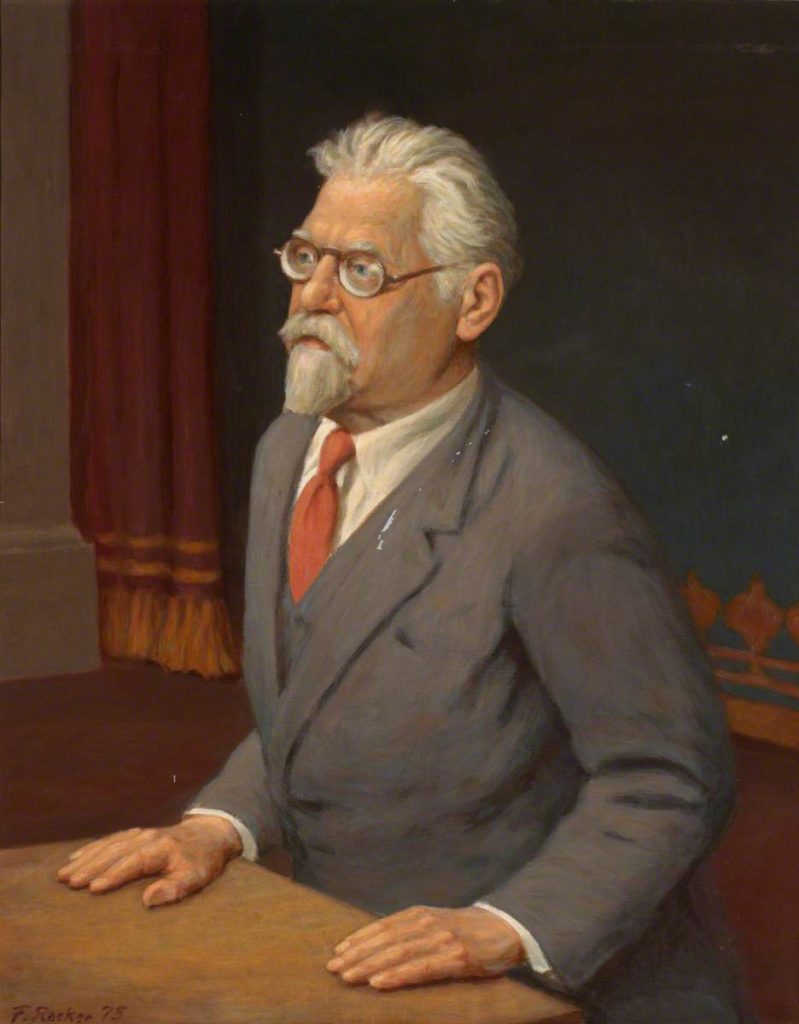Fermin Rocker (b.1907): Purpose and Audience
Fermin Rocker’s 1998 memoir focuses on his childhood in Stepney before the outbreak of World War One and his positive relationship with his anarchist Father Rudolf. It is clear that Rocker’s focus on his childhood is a conscious tool to highlight the optimism of the era before war began, and caused separation and forced immigration away from his childhood home. As Rocker describes in his memoir:
“The period described in this book was one of the brighter ones…that still had visions of a better future, of a world more just and humane. No-one dreamt what horrors the century had in stories for us, what despair and disillusionment it would bring.” (Rocker.1998.6.)

Fermin frames his memoir with a preface in which he gives a detailed account of the book’s journey to its publication and his main motivations as well as purpose for writing. He gives special mention to his wife Ruth, who he says ‘greatly improved’ his memoir using her skills as a copy editor, helping him to get further towards his memoir’s eventual publication. Fermin infers that his memoir was something which he had thought about for many years before eventually writing it, being 91 years of age at the point of its publication by Freedom Press. Publishing it at an old age meant that Fermin had fears he would not live to see it. His fears show just how important he believed his insight in to a pre-war Stepney childhood was to share with others. Furthermore, Rocker outlines the significance of his Father to the memoir:
“My Father, as the reader will soon perceive, plays a very important part in this narrative. He was the major figure of my early years and I looked upon him as a god… His humour and high spirits, his songs, quips, and sallies helped to make our little domicile the place it was, a home unlike any other I knew.“ (Rocker.1998.5.)
His Father, appears to have inspired him to write the memoir and to capture this stage of his life. As Rocker describes in the preface, the era before the outbreak of the World War was an extremely happy and carefree one, particularly in terms of his home life. Rudolf was not a stereotypical Father figure for the time. Not only did his Father lend him a new and different insight into socialist values, educating yet not indoctrinating him from a young age, he was very active in his upbringing both in affection and guidance.
Another prominent objective of Fermin’s memoir, is to recreate the ‘old’ East End of London, a place which has dramatically changed since both World War One and Two and has been heavily gentrified in the modern age. Fermin begins the first section of his memoir describing his return to Stepney as an adult and how shocked he was at how newly upmarket it had become :
“A certain amount of face-lifting had been done…There were fewer drunks about. The hawkers sounded less aggressive, less strident. Everything had become more genteel.” (Rocker.1998. 7-8.)

Rocker believes the East End had lost part of its personality and sense of tradition in his return in the late 60s. He frames the memoir with this disappointment on his return, as he traces the sites of his happiest and fondest childhood memories. One of the memoir’s greatest purposes is to recreate the old and traditional Stepney for both the community in the East End of London and the Jewish community who have lived there many years.
Bibliography
Fermin Rocker. The East End Years: A Stepney Childhood. (1998) Freedom Press: London
Picture 1 : (Accessed 4/03/2020)
Picture 2 : Fermin Rocker. The East End Years: A Stepney Childhood. (1998) Freedom Press: London. Pp10.

Leave a Reply